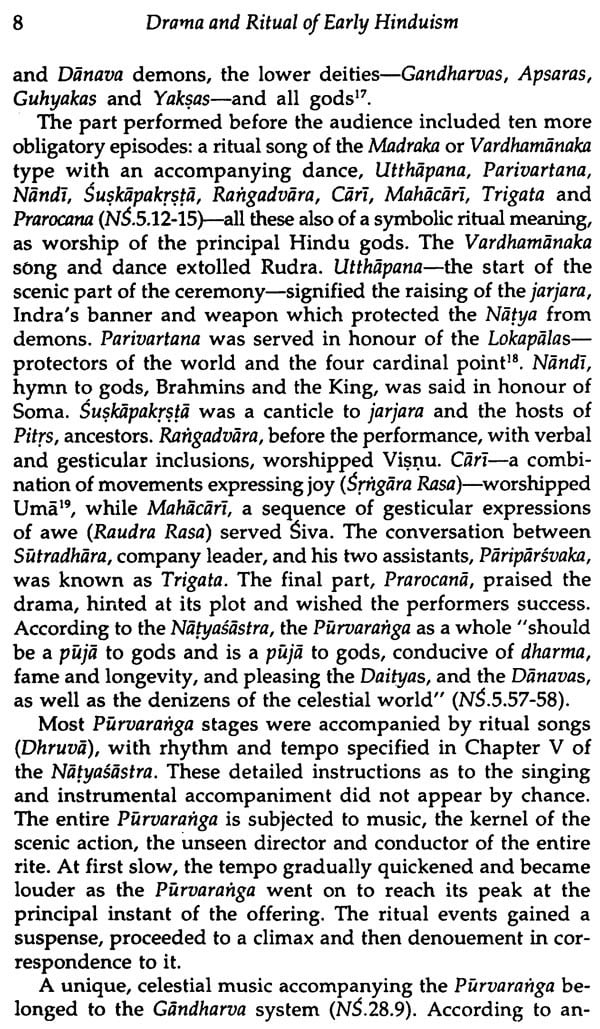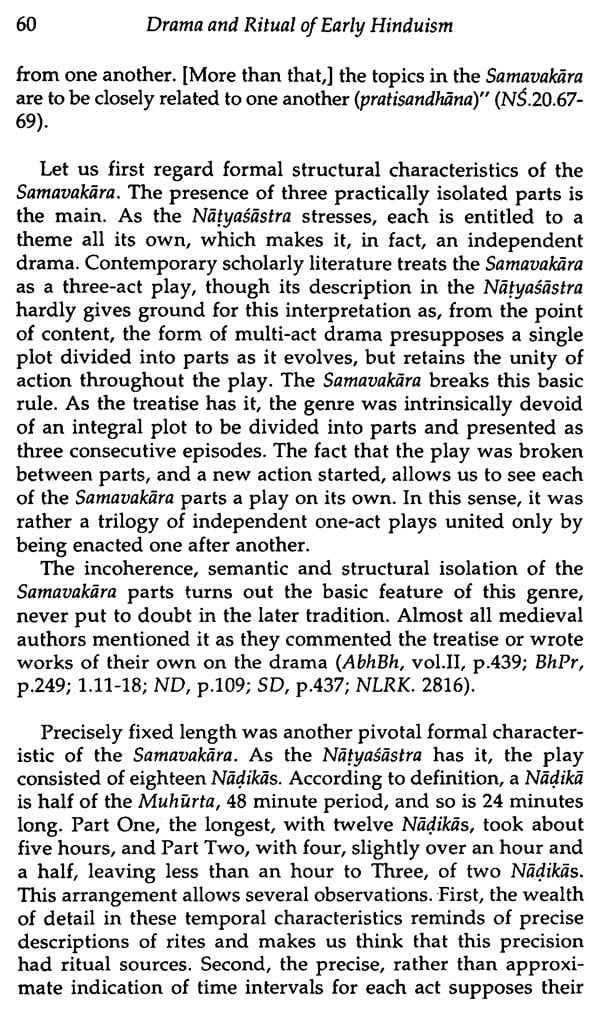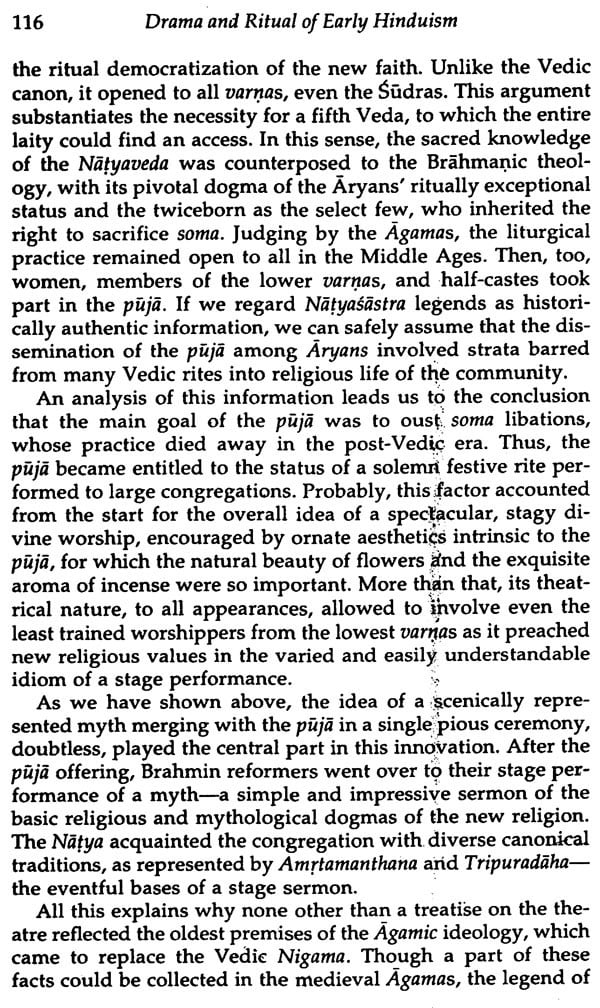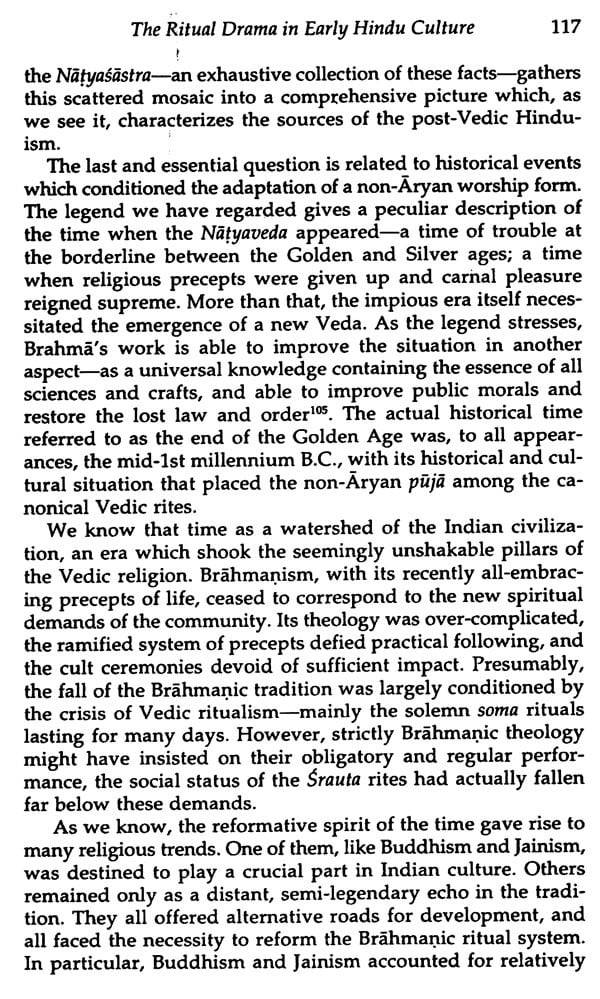
Drama and Ritual of Early Hinduism
Book Specification
| Item Code: | NAB319 |
| Author: | Natalia Lidova |
| Publisher: | MOTILAL BANARSIDASS PUBLISHERS PVT. LTD. |
| Language: | English |
| Edition: | 1994 |
| ISBN: | 9788120812345 |
| Pages: | 154 |
| Cover: | HardCover |
| Other Details | 9.00 X 6.00 Inches |
| Weight | 290 gm |
Book Description
Without exaggeration, a series such as this would not have been possible twenty years ago when I first began writing about Indian theatre. At that time little more than a few dozen books comprised the entire field of scholarship in the English language, not to mention the paucity of materials in regional Indian languages. Today that picture has radically changed. Numerous publishers have devoted precious press time to volumes of well-illustrated, detailed and, yes, sometimes even esoteric works on the multiple aspects of this fascinating subject. Comb any bookshop in Delhi or Madras, Bombay or Calcutta and you will regularly find new works appearing on the shelves. This represents a real area of growth! It is to the credit of Motilal Banarsidass that there is now the potential of assembling numerous volumes together under one umbrella.
Specialized studies such as Natalia Lidova's Drama and Ritual of Early Hinduism further our understanding of the depth and richness of the Indian performance tradition. This is particularly true when the study focuses on the roots of theatre in the distant past. This welcome book sets out to explore the foundations of theatre in ritual practice. In a careful, systematic way Lidova lays out a process by which the classical Sanskrit theatre may have come into existence. Scholars have wrestled with this question for centuries. Because of this work we have a better understanding of the process. The work is bound to encourage further speculation about this topic in the years to come.
Parallel have been the attempts at editing the text of the Natyasastra and the indispensable commentary of Abhinava Gupta, known as Abhinavabha raft. F.-E. Hall, W. Heymann, P. Regnaud, J. Grosset, Sivadatta and Parab, Kedarnath, Ramakrishna Kavi, Manmohan. Ghosh and others have painstakingly attempted to edit in part or whole the authentic text of the Natyasastra with or without its most important commentary: Abhinavabharati.
To have the courage to re-investigate a text and its interpretation, with as long and complex a history, is in itself commendable. Further, to do this sitting in Moscow at a time when access to many materials may not have been easy, is equally brave.
Dr Natalia Lidova reopens the debate on the origin of Sanskrit theatre de novo, specially, the relationship between ritual and drama. She questions the hypothesis that the Natyasastra reflects a direct evolution of theatre from Vedic ritual (Yajna).
Among these manuscripts is the Natyasastra, one of the oldest and, possibly, the most enigmatic texts Indian culture has to offer. The name of this treatise is made of two Sanskrit words: Nellya, theatre, scenic action or, more specifically, drama, and ,astra, the term accepted in the Indian tradition for holy writ dedicated to a particular field of knowledge. As is often the case with ancient Indian texts, we can hardly say anything for sure about the Natyasastra—either about the time it was written, or the author, or again, the mission meant for this grandiose cyclopaedia which stood at the cradle of the ancient Indian tradition of general artistic concept. Here, hypotheses are the lot of the contemporary scholar.
As students of this treatise repeatedly pointed out, it has no equal in the scope of information and thematic range among analogous ancient and medieval writings'. Really, its 36 chapters treat extremely diverse subjects: the ritual and mythology, as connected with the early mysterial performances; the characterization of the developed literary drama, which posed purely aesthetic, rather than sacral goals and proceeded from well-elaborated principles of acting; and last but not least, the theory of the drama, which includes a genre typology and an analysis of the formal structure of the Sanskrit drama.
**Contents and Sample Pages**












